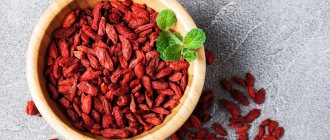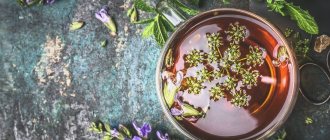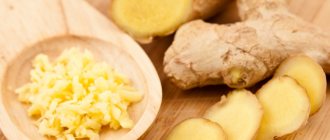Goji or Tibetan barberry is a fairly famous plant all over the world. The pleasant-tasting berries of this shrub are considered almost a universal remedy for most diseases. Their indecently high cost does not stop people who want to improve their health or join a healthy lifestyle.
The great similarity between goji and ordinary barberry suggests that we can try to grow these berries here too. Tibetan barberry is a very hardy and unpretentious plant. It easily tolerates all the vagaries of the weather - heat, drought, rain, frost. It does not require special care, practically does not suffer from diseases and pests and can produce a large harvest even in the northern regions.
The biggest and only problem is to grow good seedlings and plant them in accordance with all the rules and recommendations. A seedling grown from seeds with your own hands is much more reliable than those that can be purchased at any nursery.
Freshly picked seeds (from fresh berries) are an ideal option, but not realistic in our area. Therefore, to plant goji you will have to use seeds from dried berries. This will not significantly affect their germination. Before planting, the seeds must be kept for at least a couple of hours in one of the preparations or infusions that stimulate the growth of future plants. Epin, Zircon or infusions based on folk recipes using ash, aloe, honey, potato juice and onion peels are suitable for this.
The soil mixture for planting seeds should consist of ordinary soil (sixty percent), peat (thirty percent) and ash (ten percent). It is poured into a container, furrows are made and the seeds are sown. The top is crushed with a half-centimeter layer of peat and covered with a transparent film. The box should be in a warm and darkened room until the first shoots appear.
Immediately after the first shoots appear, the container should be moved to a room with good lighting or placed on a windowsill. Tender young seedlings require constant moisture maintenance. Spraying with a fine spray will help with this.
Picking is carried out only after the appearance of a full-fledged fourth leaf. Each young plant must be transplanted into a separate deep pot or glass (with a volume of at least 500 milliliters), since the plant has long roots. This must be taken into account when replanting and use only the transshipment method, without separating the earthen ball from the root system.
Tibetan barberry is planted in open ground at the beginning of summer, when the soil is already well warmed up and there is no danger of night frosts.
Goji planting
The site for planting goji must be chosen to be sunny and without the danger of stagnant water, that is, somewhere on a small hill or hill. Any soil is suitable for the plant, but alkaline and rocky soil will be preferable.
It is necessary to leave a distance of at least one and a half meters between seedlings. The depth of each hole is 20 centimeters. Before planting a seedling, you need to pour a small amount of ash-humus mixture into each hole.
When planting large goji seedlings purchased from a nursery, the holes should be twice as deep (at least 40 centimeters) and a larger amount of nutrient mixture should be poured. For each plant you will need one bucket of peat and compost, as well as wood ash (about one liter jar). If you wish, you can add superphosphate (200 grams) to the soil.
Immediately after planting young shrubs, abundant watering is carried out, the soil around the seedling is mulched and a support is installed for tying up the branches.
Watering and fertilizing
Tibetan barberry does not require feeding, and watering is carried out only in very hot weather and a long absence of precipitation - no more than twice every seven days. At other times, watering is not necessary.
Pruning and shaping the bush
Pruning is carried out in autumn. Most often, the formation of a bush occurs in two ways: in the form of a tree or in the classical way.
Classic pruning begins in the first year of the plant’s life. During the first three years (every year), it is necessary to carefully inspect the entire plant and select the strongest and longest branches (there can be about five of them), and cut off all the rest without hesitation. After three years, on each such branch you need to leave one (or two) shoots with an average length of 30-40 centimeters. Next season, these shoots will produce new fruiting branches, three of which (the strongest) should be left and the rest cut off.
You can form a bush with one stem. This method is used from the second year of the plant’s life. Absolutely all branches are subject to pruning, except for one - the strongest and longest. This pruning is carried out regularly (every year) until the only branch grows to one and a half meters in height. To support this branch, you need to take care of support and garter.
All further pruning is carried out according to the classical method in order to form fruit branches.
Don’t forget about “health-improving” trimmings. It is necessary to promptly rid the plant of damaged and dried branches. The shrub does not need branches located at a height of up to 40 centimeters from the ground, as well as branches that do not bear fruit.
Shelter for the winter
Goji is a frost-resistant plant, but at temperatures below 15 degrees below zero it can die. To prevent this from happening, you must use any suitable covering material (for example, vegetable tops, spruce branches, or others).
Therapeutic effect
Gadzhi have a complex positive effect on the body. Berries can be consumed at any age if there is no individual intolerance.
Benefits for women
The beneficial properties of wolfberry for women include maintaining optimal metabolic activity. Goji has a positive effect on hormonal function, slows down the aging process, and helps stabilize weight. Modern studies have shown that the berry relieves pain during menstruation, promotes rejuvenation, and prevents the growth of malignant tumors.
Benefits for men
Goji berries are also beneficial for the male body. Consumption of these fruits maintains activity and increases reproductive life . Goji helps normalize blood cholesterol levels, which prevents atherosclerosis - one of the most common and dangerous diseases of middle-aged and elderly men.
Goji during pregnancy
The benefits of Chinese wolfberry during pregnancy have not been fully studied by experts. The lack of definitive data on the safety of Goji requires caution.
The berries do not have toxic properties, but you should consume no more than a tablespoon per day.
Excess can cause allergic reactions.
Goji for weight loss
Goji cannot be considered as an effective remedy for weight loss.
Berries can help normalize weight by increasing the activity of metabolic reactions. Goji also removes toxins, free radicals, and harmful substances from the body, which has a positive effect on overall well-being and increases physical activity.
Berries contain a large amount of fiber, which cleanses the intestines and normalizes the gastrointestinal tract.
To achieve these goals, it is recommended to prepare the following recipe. Pour two glasses of boiled water over a tablespoon of berries and leave to steep for an hour. The water should be slightly warm. High temperatures destroy vitamin C, which is found in large quantities in Goji fruits and has antioxidant and immune-strengthening effects.
Berries and the risk of cancer
Interest in Goji berries is also due to their high content of antioxidants - vitamins C, A and E. They are known to remove free radicals and, to some extent, prevent malignant processes. To reduce the risk of cancer, you can consume both fresh and dried berries, as well as berry juice and Goji powder.
Propagation by seeds
Another name for the goji plant is Tibetan barberry, common wolfberry. The shrub reproduces in several ways - by seeds and vegetatively. It depends on whether a person has the opportunity to find a mature plant in order to cut a small branch from it.
Goji seeds are best collected from fresh berries. Since the tree is mainly distributed in Tibet, this will be quite problematic. However, you can also use dry fruit, the seeds of which retain important properties and are characterized by high germination due to their thin outer shell.
Before sowing, the material should be soaked in a growth stimulator for several hours to increase the chances of success. For this purpose, you can use any available drug - Zircon, Epin, etc.
You must first prepare a suitable soil - mix 2 parts soil, 1 part peat and add a little wood ash. The soil should be placed in a shallow box, moistened well and small grooves made. The seeds are sown at a distance of about 1-2 cm from each other and sprinkled with a thin layer of peat, the height of which should not exceed 0.5 cm.
Goji berry "New Big"
To create the elevated temperature and humidity necessary for rapid germination, it is advisable to cover the box with plastic wrap and place it in a warm place. As soon as the first shoots appear, you need to move the container to a windowsill or other bright place.
The soil needs to be watered regularly. This must be done using a special sprayer so that the soil is moistened evenly and gently. This is necessary so as not to accidentally damage weak shoots. As soon as 4-5 leaves appear on the seedlings, each plant should be transplanted into a separate cup. Since wolfberry is characterized by a developed root system, 500 ml containers should be used for picking.
It is advisable to plant common wolfberry in open ground no earlier than May. This will eliminate the adverse effects of spring frosts on fragile goji plants. The hole must correspond to the volume of the glass in which the seedlings grew, since the plant must be moved together with all the soil.
Vegetative propagation
A very simple way to propagate wolfberries is by cuttings or rooting lower shoots. It is available only to those people whose relatives or neighbors grow this plant.
Growing shrubs using cuttings means that in July you should cut lignified shoots about 10 cm long. You need to make sure that each part contains at least 4-5 buds and at least 1-2 cm of old bark.
All cuttings must be dipped in a growth stimulator and planted in a greenhouse or greenhouse. It is here that the optimal conditions for rooting of shoots are present. The ideal soil is a mixture of peat and sand. The shoots must be buried at least 3-4 cm in order for a sufficiently powerful root system to form.
The easiest way to propagate shrubs is by digging in the top or lower stems. The shoot, located underground, must be watered regularly to create sufficient moisture. In addition, this will allow roots to form faster. It is necessary to separate the new plant from the mother bush in early or mid-autumn in order to transplant it to a permanent place before frost and cover it well to prevent freezing.
Choosing a site for goji berries and planting features
Tibetan barberry grows well in any soil. It can be slightly acidic or highly alkaline soil, which does not affect the development of the bush at all.
The area for goji berries should be sunny, as the plant loves bright sunlight. You cannot place the bush in a lowland, as it reacts poorly to stagnant water. The optimal time for planting is spring, but with the vegetative propagation method, after separation from the mother bush, the seedling must be immediately planted in a permanent place.
To ensure optimal conditions for the rapid growth and development of goji berries, you must first prepare a special hole up to 40 cm deep and about 50-55 cm wide. Fertilizers should be poured into the bottom - 150-200 g of superphosphate, 30 g of potassium sulfate or wood ash, and also about 10 kg of humus or peat. Mix all ingredients well. Deepen the roots of the seedlings slightly into the resulting soil and sprinkle with soil on top.
When growing Tibetan barberry from seedlings, the planting hole will be much smaller, depending on the volume of the root system.
It is advisable to have at least 2 plants in 1 plot to achieve successful fruit set. This is due to the fact that the bush is cross-pollinated.
Goji berries: description and characteristics
In many countries, these berries are eaten for medical reasons. Decoctions and infusions of dried fruits are taken to improve metabolism in order to quickly and safely lose weight.
Goji berries and seeds uses:
- infusions;
- decoctions;
- teas for weight loss;
- tonic drinks.
Goji seeds contain atropine, a substance that has a stimulating effect on vital processes in the body. This substance is toxic, but in small doses it is an effective medicine.
The international name of the shrub is “goji”. According to the description, it is a little reminiscent of the poisonous wolfberry plant, so many gardeners are wary of it.
Goji berries
Basic parameters of an adult plant:
- height - in favorable conditions reaches 5 m, low-growing specimens are practically not found;
- spherical crown with a diameter of up to 6 m;
- branches covered with thorns;
- leaf shape – small, oval;
- leaf color – green with a bluish tint;
- berry shape – small, oval;
- The color of the berries ranges from pink to dark red, depending on the degree of ripeness.
Important! Fresh berries are not suitable for consumption. It is not recommended to plant the plant if children often visit the garden.
Care and fertilization
Planting and caring for goji berries in the Moscow region involves the use of the same measures that are carried out in other regions. The main feature is shelter for the winter, which is due to the different times of frost and their intensity.
You need to care for the plant constantly, but especially in the first year after planting. This is the most important period, on which future fruiting largely depends. In the absence of precipitation, it is necessary to water young bushes, loosen the soil for sufficient penetration of oxygen into the soil, remove weeds, and apply fertilizer to the ground. In general, Tibetan barberry is very unpretentious and grows very well. There is no need to treat the bush with insecticides, since it is extremely rarely affected by pests.
Fertilizing is applied only at the time of planting; in the future, it is advisable to enrich the soil with nutrients once a year, preferably in the spring. For this purpose, you can use special ready-made mixtures containing potassium, phosphorus and nitrogen, as well as use organic fertilizers in the form of compost.
An important part of caring for the common wolfberry is pruning and shaping the bush. There are 2 options for carrying out this work - classic and 1 stem:
- Classic pruning
. In the first year of the growing season, 3-4 of the most powerful branches should be left, the rest should be completely removed. This principle must be adhered to over the next 2-3 years. Starting from the 4th year of growing season, on each main branch it is necessary to leave 3-4 shoots (fruit arms) 20-40 cm long. Such pruning will have a stimulating effect on the intensity of growth of new stems and thus the formation of a rich harvest. - Pruning into 1 stem
. It makes it possible to grow not a bush, but a small tree. The essence of the method is to leave only 1 branch on the plant and remove the rest. To prevent the goji berry from falling, it must be tied up immediately, since it must reach at least 1.5-2 m in height. In the future, pruning of the plant is carried out in a classical way, the main principle of which is the complete removal of weak, lower and thin branches.
Pruning a goji plant is very similar to shaping grapes, and if there is this berry in the garden plot, there will be no problems with Tibetan barberry.
In the first year of the growing season, the common wolfberry must be covered with spruce branches, tops or any other similar material. After all, a young plant can withstand frosts only down to -15°C. Subsequently, the goji berry grows quite thick wood and its frost resistance increases significantly (up to -30°C).
By growing Tibetan barberry in your garden or summer cottage, you will get an unusual plant that has a lot of useful properties.
Tibetan barberry is a plant that has recently become incredibly popular. Goji berries have a strengthening effect on the body, help get rid of cellulite and improve vision; each berry contains a rich set of vitamins, minerals and trace elements of natural origin. The natural habitat of Tibetan barberry is the mountainous regions of Tibet, from where the berry is supplied in limited quantities to different countries. In this article you will find information on how to grow goji berries yourself, on the selection and processing of seeds for planting in the country.
Useful bait (Russian name for goji) promises relief from a number of diseases.
In Tibet, they have long learned to use the fruits of wolfberry: local shamans prepared tinctures and mixtures that healed various diseases. For several centuries, the secret of this plant was successfully hidden, but now goji berries can be bought for the prevention and treatment of diseases in any country.
Dereza belongs to the Solanaceae family - a tall shrub up to 2 meters in height, has tangled flexible shoots with thorns, blooms with small star-shaped, funnel-shaped lilac flowers with green veins. During flowering, dereza attracts bees - the plant is an ideal honey plant.
A huge number of species of this shrub are distributed throughout the globe (about 80 species are known): African wolfberry - in Africa; Shanghai barberry - in China; Lycium is found in the foothills of the Caucasus. The plant develops well on slightly salted soils; after flowering, which lasts the second half of summer, the fruits ripen - red, yellow or orange berries. There are varieties with purple berries.
In Russia, dereza was known under the names: zamanikh (zamanikha), devil's lashes, tkenna (in the Caucasus).
Only goji berries from Tibet have medicinal properties.
Use of the ingredient in cooking
In cooking, berries are used as an auxiliary element in many dishes. They are used to make smoothies, add to salads, and use as a decoration or filling element. Fans of healthy eating sensibly assess the real benefits of goji and perceive it at the level of dates, sesame seeds or pumpkin seeds (not a panacea, but a quality plant product).
What to combine goji with:
- cottage cheese;
- smoothie;
- vegetable dishes (salads, stews);
- porridge from any grain, both green and sprouted;
- tea, coffee, soft drinks (goji will get wet, release juice and act as a sweetener);
- salad;
- meat dishes;
- seafood.
It is recommended to carefully select a berry supplier. If it is not possible to arrange an official delivery from, for example, Tibet, where the cultivated plant grows, use a proven service. Order official products on iHerb, be sure to check the composition and documentation of the seller.
The ingredient is sold and introduced into the diet in dried form. Before use, rinse the berries thoroughly to remove any accumulated dust and possible harmful components. Manufacturers may further process the fruit to increase shelf life, so never eat unpeeled fruit. If you are not sure that quickly rinsing goji in water will not give any results, soak the product. Place the berry in a container with boiling water and let it brew for about 5-10 minutes. Drain the cooled water, rinse the berries again and add to dishes. The goji will soften, become like a raisin, and all harmful substances will come out.
Goji Berry Smoothie Recipe
We will need:
- banana – 3 pcs;
- almond milk – 300 ml (can be replaced with soy or coconut milk, but it is almond milk that gives natural sweetness and is an excellent substitute for cane sugar);
- goji berries – 100 g;
- strawberries – 10 pcs;
- honey to taste (add honey as a sweetener if the sweetness of banana and almond milk is not enough).
Preparation
Grind the ingredients and place them in any order in a blender. Mix until the consistency of a thick drink is uniform. Pour into glasses, garnish with strawberry slices, and top the smoothie with a few more goji berries. Experiment with ingredients and get new and unique combinations.
Best materials of the month
- Coronaviruses: SARS-CoV-2 (COVID-19)
- Antibiotics for the prevention and treatment of COVID-19: how effective are they?
- The most common "office" diseases
- Does vodka kill coronavirus?
- How to stay alive on our roads?
At the end we get 3 servings of an invigorating drink. We recommend starting the day with a glass of freshly prepared mixture. The liquid will tone the body, stimulate digestion and prepare you for the start of a productive day.
Growing wolfberry from seeds
This plant has many names, in Russia the most common is zamanika.
To plant an amazing plant with medicinal berries on your plot, you need to grow a sufficient number of seedlings to ensure a harvest of wolfberry in quantities sufficient to treat or prevent diseases. The undemanding plant takes root well in summer cottages in the Moscow region. Caring for plants is not anything special; wolfberry tolerates low-fertility soils of moderate salinity.
In nature, wolfberry (Tibetan barberry) reproduces by self-sowing - the berries, falling to the ground, germinate, forming new thickets.
At home, if it is impossible to take cuttings from adult plants, the shrub will have to be grown from seeds, carefully observing the agricultural techniques for growing this plant. Wolf seeds for planting in the country can be purchased in specialized stores, or you can use goji berries for propagation.
Seeds are planted in winter, around mid-February. Seeds freed from berries are soaked in a solution of growth stimulants; excellent results were noted when using Epin, Zircon and Humate. The seeds are kept in the solution for about 2 hours, after which they are immediately sown in containers filled with a mixture of peat and loam. For better seed germination, the bowl must be covered with glass or plastic film, creating greenhouse conditions.
The first shoots begin to appear approximately 2 weeks after sowing; at this time, weak shoots must be protected from direct sunlight. Young seedlings must be picked at the 2-3 leaf stage, and each plant should be transplanted into a separate pot.
Dereza quickly grows after transplantation, so before planting in open ground, it may be necessary to transfer it again to a larger container. It is useful to pinch out the growing point of young plants - this operation will allow you to obtain seedlings with a well-developed crown.
Bushes can be planted in a permanent location in warm weather, when there is no danger of morning frosts.
Goji smoothie
You can make a healthy smoothie from Goji berries. To do this, you can use wolfberry fruits either separately or in combination with other fruits and berries. Traditional smoothie recipe: Take a glass of fruit tea or coconut water. Add a glass of any frozen berries and half a glass of dried Goji fruits. All ingredients must be blended in a blender until a homogeneous consistency is obtained. If desired, you can sweeten the drink.
Dereza from cuttings
If Tibetan wolfberry bushes are already planted on the site, the plant can be propagated by green cuttings, which are cut from the bushes in the second half of summer. Such plants cannot be planted in the ground in the fall, so growing new specimens of wolfberry from cuttings will require free space in greenhouses, where the plants should remain until spring.
For cuttings, you should choose a branch with weak bark, from the middle part of which cuttings 10-12 cm long are cut. The prepared cuttings are soaked in a solution of growth stimulants, and then planted in boxes with a nutritious earthen mixture based on peat. It is useful to add loamy soil to the peat base. The planted wolfberry cuttings are covered with film, creating greenhouse conditions.
The appearance of roots is observed after 2-3 weeks, when the growth of leaves reaches 3 pieces, the plants are transferred to pots of larger diameter, where young Tibetan barberry bushes will overwinter. Caring for plants during wintering includes periodic watering and inspections for the presence of pests, which should be destroyed in a timely manner.
Agricultural technology for outdoor care
Dereza blooms with inconspicuous lilac flowers.
Tibetan barberry (not to be confused with real barberry, which belongs to a completely different botanical species) is a very undemanding plant that can tolerate short-term droughts and tolerate poor and saline soils, but to obtain a rich harvest of berries, it is necessary to provide the dereza with proper care.
Soils with a slightly acidic reaction are suitable for planting wolfberry, but growing shrubs is possible on any soil. The plant develops best in open areas, because the size of the average bush is quite large. You should not choose shady places with high groundwater levels for placing plants - Tibetan barberry is afraid of getting wet and develops better in sunny places.
It is best to plant bushes in open ground in the spring, because during autumn planting, the plant can easily freeze. Without shelter, the bushes winter well at temperatures down to -15C in the southern regions of our country. When the temperature drops in winter to -25C, it is necessary to cover the crop, but even such actions cannot guarantee that the wolfberry will overwinter without frostbite. Sometimes bushes that are not covered enough freeze out to the level of the root collar, but in the spring they successfully grow back.
Seat
Seedlings are planted in separate holes, which are located at a distance of up to 2 meters from each other. The dimensions of the pit are 50x50x40 (for small seedlings), 60x60x40 - for adult bushes. The soil taken out of the pit is mixed with peat, humus, wood ash and superphosphate in a ratio (weight in kg) of 5: 5: 0.04: 0.2. The root collar is slightly deepened when planting. The tree trunk circle should be thoroughly watered and mulched on top with peat chips or humus.
Dereza care
Small wolfberry seedlings, picked into different pots.
It is very easy to care for wolfberry bushes:
- Watering - the plant cannot be flooded, so watering is carried out taking into account summer temperatures, taking into account moisture due to precipitation. In dry weather, plants can be watered 2 times a week.
- Fertilizing – soils of average fertility are ideal for growing plants. Fertilizers are applied in the first half of summer after planting the plant in open ground; Tibetan barberry does not need further fertilizing.
- Wintering - there are two ways to preserve plants in winter: constructing a reliable shelter, the second way is to preserve the dug out bushes in a greenhouse, planting them in the ground every spring. Both methods have their pros and cons. With winter shelter, there is no guarantee that the plant will not freeze in severe frosts, but it will not receive additional stress during replanting.
- Pruning - Goji bushes tolerate shaping haircuts and drastic pruning well. Plants quickly grow green mass, bloom well on new branches and bear fruit productively.
- Protection from pests - Tibetan barberry is highly resistant to diseases; pests also rarely visit this plant. Sometimes aphids can harm wolfberry seedlings, but this pest does not damage adult plants. In rainy weather, powdery mildew may appear on young plants. Bushes should be treated with phytoncides.
Wolf bushes dug up for the winter may become diseased in greenhouse conditions, which will not allow them to produce good growth when transplanted into open ground. Annual transplants lead to a shift in the timing of crop ripening closer to autumn, thereby reducing the productivity of the bushes.
Proper care of wolfberry bushes guarantees a high yield of berries, which have high preventive and healing properties.
Goji berry, or Tibetan barberry, or barbaric wolfberry, comes from Tibet, where it grows wild. The plant was found by monks, and, thanks to its qualities, became an effective cure for many diseases.
Growing goji in an apartment or in a country house is becoming popular, as the berries are an excellent remedy for the treatment of ARVI, flu, and colds in children and adults. The healing fruits of goji contain 500 times more vitamin C than citrus fruits, and in terms of mineral composition they have no analogues among other representatives of the flora. The berry contains 21 types of mineral salts.
Goji berries have revolutionized the weight loss market. The results of using Tibetan barberry are stunning: without diets and grueling exercises, you can lose up to 10 kg in a week (see video). The berries are poisonous fresh, but once dry they are quite edible. The plant belongs to the nightshade family, which is why it has a specific taste.
For cultivation, Chinese agronomists specially created a variety with larger berries and perfect taste. Chinese goji, unlike the wild plant, produces fruits only after 2-4 years of growth. At home, the seeds of Tibetan barberry sprout quickly, and the cuttings take root without much difficulty or additional stimulants. How to grow Tibetan barberry in a garden plot or at home in a pot?
Calorie content and chemical composition
The calorie content of goji berries is quite low, it is 35 kcal per 100 g of product. This small indicator is of interest to people who are prone to obesity and want to lose a few extra pounds. By components of BZHU
- 14% comes from proteins;
- 5% is allocated to fats;
- 34% are carbohydrates.
A fairly large percentage of proteins (more precisely, the amino acids from which they are built) distinguishes goji from other berries and increases the nutritional value of the product.
Minerals
The composition includes 11 macroelements needed by the body in significant quantities and 22 microelements needed in microdoses. But regardless of the quantitative composition, the content of each of them is necessary in metabolic processes.
Amino acids
The fruits contain 18 amino acids, 8 of which are considered essential. They come from food and are not synthesized inside the body. These are the “building blocks” from which protein is built. It, in turn, is the main building material necessary in the process of cell and tissue growth.
Vitamins
The influence of vitamins on health is known to everyone, so the presence of a “vitamin cocktail” in berries increases their rating in the eyes of ordinary buyers and connoisseurs of healthy nutrition.
The fruits are enriched with vitamins C, E, group B: B1, B2, B6, B12. The percentage is higher than in citrus fruits, although it is inferior to them in the amount of vitamins. Compounds of this group are necessary in metabolic processes, to maintain immunity, and have antioxidant activity. The role of each vitamin is individual and irreplaceable.
Other useful components
The properties of goji berries are associated with the presence of a number of important substances. This:
- sugars, which strengthen vascular walls and normalize blood pressure; support the functioning of the immune system, cause resistance to stress;
- polyunsaturated fatty acids necessary for the cardiovascular system, they protect against atherosclerosis and suppress inflammation;
- phytosterols reduce the risk of developing diabetes mellitus and atherosclerosis;
- carotenoids, which are powerful antioxidants that slow down the aging process;
- phenols, which also exhibit antioxidant activity.
A spoonful of fruits per day is enough to replenish the reserves of substances that are often in short supply in the body. Infusions and extracts are suitable for obtaining the necessary components.
Agricultural technology
Goji Tibetan is a shrub with creeping stems, in the wild reaching a length of 8 m (see photo). The branches have sharp thorns along their entire length, the leaves are long and narrow, completely covering the stem. Flowering occurs in spring and summer. The fruits are formed at the top of the stems. The berries are bright red in color and resemble cherry tomatoes in appearance. Inside there are small seeds, 8-15 pieces. Goji tastes sweetish with bitterness and slight sourness. The first harvest is harvested in the summer and continues until late autumn. Not only the berries are useful, but also the bark and leaves. In China, goji is popular as a seasoning for cold and hot dishes.
Goji berries are watery and difficult to dry. There are about 40 species in total, of which only Chinese and Tibetan goji have healing qualities. Fresh berries in contact with human skin cause severe oxidation and darkening of tissues. The whole plant is poisonous when fresh!
The crop is harvested on burlap, spread under the bush, and the ripe fruits are knocked down with a stick.
The climate conditions in central Russia make it possible to grow goji in the country. Rocky soil is suitable for the plant; on fertile soil the plant also grows and reproduces well. Care consists of watering, pruning, harvesting, and preparing for winter.
At home, the plant is provided with:
- draft protection;
- diffused light without direct sunlight;
- 1 month of wintering in January-February with an air temperature of 10 0 C;
- frame for stems;
- pruning and formation of fruit branches;
- alkaline soil;
- watering once a week.
Goji is propagated by seeds and cuttings. In specialized stores you can purchase seeds, seedlings and adult plants, but it is not always possible to grow and maintain fruiting. Growing Tibetan barberry from seeds and seedlings is a labor-intensive, time-consuming process. The plant begins to bloom and bear fruit only in 2-4 years.
Goji berries[edit | edit code]
Goji berries or Wolfberry Dried Goji berries
Goji berries
is a popular product for weight loss and health promotion based on woody plants of the genus Dereza (Lycium) of the Solanaceae family, the effectiveness of which remains unproven. Wolfberry is the common name for two very closely related species: Lycium Barbarum and Lycium Chinese.
According to Germplasm Resources Information Network, it is also known as Chinese wolfberry
,
goji berries
,
wolfberry
,
Duke of Argyll tea tree
, or
common wolfberry
.
Regardless of the plant's geographic origin, the names Tibetan goji
and
Himalayan goji
are widely used in the health food and supplement market.
Distribution[edit | edit code]
Goji berries
Wolfberry now grows in many regions of the world, its original range is unclear (between southeastern Europe and southwest Asia). However, industrial farming only exists in China. With a reputation as a highly nutritious food, wolfberry has been used in traditional Chinese medicine for approximately 1,900 years. The undocumented legend about them, however, is much older, as wolfberry is often associated with the name of Shennong, the legendary first emperor of China, the mythical father of agriculture, and herbalist who lived around 2800 BC.
Claimed healing properties[edit | edit code]
Wolfberry berries have long played an important role in traditional Chinese medicine. Supposed properties of the berry:
- improving a person’s emotional state;
- help in the fight against excess weight;
- help improve metabolism;
- improve potency in men and desire in women;
- help improve skin condition;
- stabilize hormonal levels in women;
- increase endurance and the body’s ability to recover, improve sleep;
- normalize human blood sugar levels;
- suppress cancer cells[1].
Propagation of Tibetan barberry by seeds
To grow a plant at home from seeds, collect ripe large berries. Soak the berries in water for a couple of hours. Small seeds (about 1 mm - see photo) are selected from the fruit shell of the berry and soaked for 1-2 hours in a plant growth stimulator. Epin and Zircon will do. The seeds have good germination.
Prepare a soil mixture of loam and peat (2:1) with a neutral pH reaction for seedlings. Arrange drainage in the pot (1.5-3 cm). The soil is deeply moistened. Several seeds are planted in one container. The seeds are buried 2-2.5 cm into the soil. The soil is constantly watered, preventing it from drying out. It is important to provide favorable conditions without temperature changes and protect from drafts. After 2 weeks, the first shoots appear. After germination of the seedlings, the container is moved to a bright place, but without direct sunlight.
The seedlings are transplanted into separate pots immediately or after two true leaves appear. The root system of goji seedlings is very developed and grows deep. Therefore, there is no need to waste time with the transfer. Pots for seedlings are chosen at least 7 cm deep. A plant grown from seeds at home begins to bloom the very next year.
How to grow berries by cuttings and seedlings
The technology of growing fruit-bearing plants at home from cuttings can significantly speed up harvesting. To do this, cut the adult stem at a height of 35-40 cm. The cut stalk is cut at an angle, 10-15 cm long. The cuttings are placed in moist soil and covered with a glass jar. Regularly moisten the soil. After the leaves appear, remove the jar. Rooted cuttings with 2-3 leaves (see photo) are planted in a pot and provide constant care.
It is easy to grow goji at home using purchased seedlings. The average cost of seedlings on the Russian market is 300-600 rubles. The rooted seedling should be transplanted into a larger diameter pot and provided with appropriate care.
To plant seedlings in open ground, prepare a sunny place. When choosing a site, take into account that there should be at least 1.5-2 m between plants. Dig a hole with a diameter of 50 cm and a depth of 40 cm. Fill it with a mixture of humus, soil and coarse river sand. The plants are planted in a row, with a row spacing of at least 2-3 m. The seedling is slightly buried.
Conditions for growing goji can be easily created at home on a windowsill or in a garden plot in central Russia. The plant tolerates frosts down to -30 degrees, gusty winds, frosts, dry air and heavy rains in summer. Seeds and cuttings take root well and produce a harvest the following year.
This resistance to weather changes is due to the Spartan lifestyle of the wild plant in the mountains of Tibet. The value of goji berries is incomparable to any other fruit plant.
The goji bush is not difficult to grow; it is attractive and bears fruit with edible berries. And most importantly, goji berries contain many nutrients, antioxidants and minerals that you will not find in other fruits and vegetables.
In China and Mongolia, goji berries have been grown for many centuries. Medicine uses them in the treatment of liver-related diseases, side problems and to normalize cholesterol.
The goji plant is also called barbaric wolfberry or Tibetan barberry.
How to dry goji berries at home
To keep the berries for a long time, they need to be dried the same day after picking. You can dry fruits at home using an automatic dryer of the “Veterok” type. Drying on the window is also possible: newspaper is spread out, and ripe fruits are carefully poured onto it in a thin layer.
Goji berries
You can also use the oven, the main thing is to make sure that the fire is as low as possible, otherwise the fruits can be burned. It is advisable that the gas stove be equipped with a convenient oven temperature indicator, then it will be easier to control the drying process.
Please keep the following in mind:
- the surface intended for preserving berries must be absolutely dry;
- the fruits need to be distributed over the surface in an even thin layer;
- Before drying, the berries are sorted, rotten and unripe ones are removed, and debris and dried leaves are removed;
- the finished raw materials for the preparation of medicines are again sorted and stored in canvas bags.
Note! It is not recommended to store raw materials in a plastic bag; dried fruits can quickly deteriorate. Medicinal decoctions and infusions should be prepared strictly according to the recipe, observing the recommended dosage.
Choosing a landing site
You are interested in the goji plant, and you want to grow it on your plot, then keep in mind that growing goji is easy, but the bush quickly grows in width and it will not be easy to get rid of the plant. Goji quickly takes over an area and can crowd out other plants. Therefore, goji bushes should be planted at the end of the plot, near ditches, near the road, near the garden or garden. He will even like to grow in a vacant lot.
Goji loves the sun, so it needs to be planted in appropriate areas.
Growing goji
The bush of an adult plant reaches up to three meters in height. In early summer, goji blooms with white and purple trumpet-shaped flowers that turn into glossy, bright red berries by late summer.
Goji is a resistant plant and can tolerate temperatures from minus 26 to plus 40 0 C. The plant is not demanding of moisture and is not afraid of drought.
Goji propagation by seeds
Goji can be propagated by seed and vegetative methods. Using a fruit seed, you can grow a bush. Goji seeds are washed after being removed from the ripe fruit and sown in moist soil. They are sprinkled with soil in a small layer. Then the crops are moistened with a spray bottle; excessive watering is not allowed. It is advisable to provide drainage in the seed container by placing broken shards and sand at the bottom.
The container with the crops is covered with glass or polyethylene to create a greenhouse effect and speed up germination. The shelter is removed after the formation of individual leaves on the seedlings, while the sprouts are provided with sufficient lighting and a temperature of 20-25 0 C.
When there are 2-3 leaves, you can start picking the plants into separate containers. Goji grown from seeds will bloom in the second year of life, and it forms berries in 3-4 years.
Vegetative propagation
For propagation, one- and two-year-old cuttings 10-15 cm long are taken. The cutting should have 3-4 buds. The cuttings are cut at an angle with a sharp knife or pruning shears. The blanks are planted in a greenhouse, in a substrate consisting of sand and peat, deepened to 3-5 cm (the lower bud should be in the ground).
Goji can also be propagated by root suckers, which is very easy to do, because the plant grows quickly.
Goji berry picking
Goji fruits ripen all summer, so you need to collect elongated berries that resemble grapes. The goji bush is prickly, its thorns are up to 2.5 cm in length, so the harvest is carefully harvested. It is better to spread a tarpaulin or blanket under the bush and trudge the bush. You need to repeat the process every 2 days, since birds love ripe goji berries, and you may have nothing left.
Goji berries can be consumed fresh or dried, or they can be frozen. You can make drinks from them and use them in baking.
Types and varieties of goji
As we have already mentioned, the common wolfberry, or goji, is a species of the genus. There are two known varieties of this species:
Tibetan wolfberry (Lycium barbarum)
Or Tibetan goji - a high-yielding form of the plant that begins to bloom and bear fruit in the first year after planting. Tibetan goji berries are drop-shaped, up to 2 cm long, sweet, with a noticeable nightshade flavor. Disadvantages are watery fruits and too large seeds.
In the photo: Tibetan wolfberry (Lycium barbarum)
Chinese wolfberry (Lycium chinense)
Or Chinese goji , a taller, stronger plant with elongated, crisp, sweet berries that are easy to eat and easy to dry. Disadvantages: late entry into fruiting and low winter hardiness.
In the photo: Chinese wolfberry (Lycium chinense)
Recently, varieties of common wolfberry have appeared that are of interest to gardeners:
- Conditions for growing healthy pepper seedlings
- New Big is an unpretentious, fast-growing and frost-resistant Polish variety that produces its first fruits already in the year of planting. The bright orange berries have a sweet and sour taste;
- Lhasa is an early frost-resistant productive variety of Chinese selection up to 3 m high with arched branches studded with thorns. The plant begins to bear fruit in the second year after planting. The flowers are purple, self-pollinating, the fruits are deep orange, oblong-ovoid, up to 2 cm long and weighing 2-3 g. The pulp is sour-sweet with a barely noticeable bitterness;
- Sugar giant is a spreading, productive and frost-resistant shrub up to 3.5 m high with surprisingly tasty fiery orange berries up to 2.5 cm long. This variety is called Tibetan barberry;
- Sweet Amber is a frost-resistant but heat-loving Chinese variety, bred in 2021, but very quickly gaining popularity. This plant does not cling to supports, but rests on them. This fast-growing bush can reach 2.5 m in height, and its berries become amber-transparent when ripe;
- Superfruit is a lush light-loving shrub up to 3 m high with rich red fruits. Fruiting begins three years after planting.
Culture of "eating"
Goji in China is a waste-free plant. Bark, leaves, shoots and berries are used there, but subject to certain proportions and doses. You should start eating berries with one or two, especially fresh ones. If after a few hours no signs of poisoning or an allergic reaction appear, then the berries are not contraindicated for you.
Goji berries should be eaten after meals per day, up to 10 g. You can make tea from dry leaves; you should drink it in the late afternoon after meals, as it has a relaxing effect. The leaves are harvested in May and dried in the shade. Brewing: 200 ml of water – 2 g of leaves.
There is a lot of interest in this plant, try planting it on your plot and you will get a useful, valuable berry.
Harm and contraindications
The fruits of Chinese wolfberry will have to be consumed during pregnancy and lactation: they cause digestive problems, which are accompanied by bloating, diarrhea or constipation. Some people are allergic to red fruits or vegetables; for them, the berries of the Chinese wolfberry are locked. Children under 3 years of age are not recommended to eat this product.
Side effects develop if low quality berries are purchased. For long-term storage, they are treated with preservatives, and one of them: E 220 can cause pain in the abdominal area.
You should also pay attention to the time of use. It is not advisable to eat wolfberry fruits in the evening, otherwise insomnia is guaranteed. They give vigor and energy, which are extremely undesirable at night.
The positive effects of goji berries on the body are beyond doubt. This is not a panacea for all ills, but an excellent general strengthening remedy that will save you from many health problems. But you shouldn’t expect a miracle effect from them, but just take a handful of berries a day and enjoy life and your excellent health.











